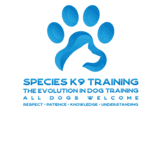Dog Trainer for Aggression: Expert Aggressive Dog Training in Waco
Is it possible to train aggressive dogs? Absolutely. Aggression, the most challenging behavior for dog owners, becomes less daunting with understanding. Below is a list of dog aggressions, each requiring its unique approach. As a trainer for aggressive dogs, I provide tailored solutions to address these behaviors effectively.
As you are looking for someone to help you with your dog’s aggression please be sure they are ethical and humane. Anyone can suppress a behavior in a dog temporarily. Suppressing a behavior is like squeezing a water balloon that is not full. When you do some part of it will be put out somewhere else. If the behavior is a natural one it cannot be rehabilitated. See the blog post here about dog training. However, it can be managed and redirected in an appropriate way.

The most common cause of fights within the home.
Dominance Aggression
Is your dog’s behavior changing? Is he/she between the ages of 2 and 4 years old? This is the age when dogs typically reach sexual maturity, and behavioral issues emerge, typically in the form of dominance aggression. That is why I have this example listed at the top of this page. Visit any animal shelter and you’ll find that the average dog is between 2 and 4 years old with the listing of owner surrender. This sad reality can be fixed with a little extra understanding and knowledge. Over 50% of dogs will be rehomed during their lives for no other reason than the owner’s lack of knowledge. Aggressive dog training is possible with some simple steps and knowledge.
Spotting Signs of Dominance Aggression in Your Dog
Attempting to Prevent Your Exit from a Room
Here are key signs that will help you spot if your dog has a dominance aggression issue. Does your dog growl or bite at you when you pet it? If you ask your dog to move from a spot, will it bark or act aggressively? Does it try to stop you from leaving a room? All of these are signs of dominance aggression. Do not worry, we can help, aggressive dog training is possible.
Dogs are domesticated wolves

Types of Dog Aggression
Fear Aggressive
Predatory Aggression/Prey Drive
Territorial Aggression
Resource Guarding
We provide expert dog training services for aggressive dogs, offering effective solutions to promote positive behavior and strengthen the bond between owners and their pets. Cultivate a harmonious companionship with our dedicated training approach.
